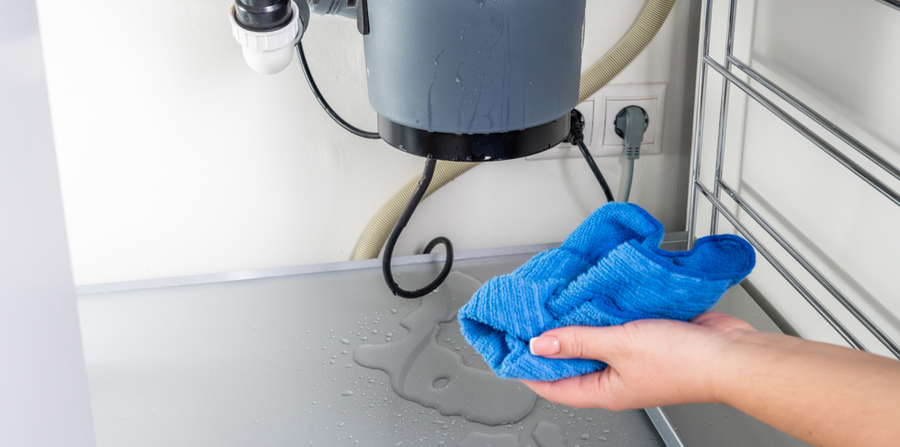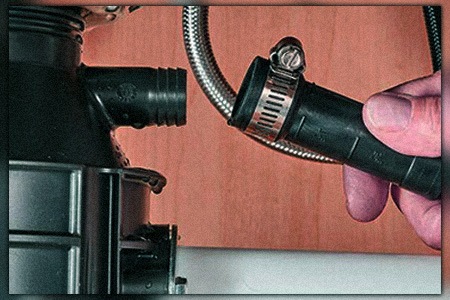Verified Solutions for Fixing a Dripping Garbage Disposal
Verified Solutions for Fixing a Dripping Garbage Disposal
Blog Article
This great article in the next paragraphs on the subject of Tips on Fixing a Leaking Garbage Disposal is extremely motivating. Don't miss it.

Garbage disposals are essential kitchen area home appliances that aid in getting rid of food waste successfully. Nonetheless, a leaking garbage disposal can be an aggravating and untidy issue to take care of. The good news is, lots of leaks can be dealt with quickly with a couple of easy steps. In this article, we will certainly go over exactly how to deal with a dripping waste disposal unit efficiently.
Introduction
Waste disposal unit are set up under kitchen area sinks and are made to shred food waste into smaller sized pieces, permitting it to go through the plumbing system easily. While these devices are usually reliable, leakages can happen in time due to deterioration, loose links, or damage to the device.
Step-by-Step Guide to Fixing a Dripping Garbage Disposal
Shut off the Power
Prior to attempting any kind of fixings, guarantee that the power to the waste disposal unit unit is shut off to stop the risk of electrical shock.
Situate the Leak
Determine the specific location of the leak and determine the cause
Tighten up Links
Use a wrench to tighten any type of loosened links between the disposal unit and the plumbing system.
Replace Seals or Gaskets
If the leak is because of used seals or gaskets, get rid of the old components and replace them with brand-new ones.
Patching Splits or Holes
For cracks or holes in the disposal unit, usage epoxy or an appropriate patching material to seal the broken area.
Recognizing the Resource of the Leak
Prior to trying to deal with a dripping waste disposal unit, it is essential to identify the source of the leak. This can generally be done through aesthetic examination or by performing basic tests.
Visual Evaluation
Inspect the garbage disposal system thoroughly for any kind of indications of water leak. Pay very close attention to areas around seals, gaskets, and connection factors.
Evaluating for Leakages
One method to test for leaks is by running water through the disposal device and checking for any kind of visible indicators of leakage.
Typical Causes of Leaks in Trash Disposals
Worn Seals and Gaskets
Seals and gaskets play a vital duty in preventing water from dripping out of the waste disposal unit. With time, these components can weaken, bring about leaks around the disposal unit.
Loose Connections
The links in between the waste disposal unit and the plumbing system can become loose gradually, triggering water to leak out during operation.
Cracks or Openings in the Disposal Device
Physical damages to the garbage disposal, such as splits or holes in the housing, can additionally cause leakages.
Tools and Products Needed for Repairing a Leaking Waste Disposal Unit
Before beginning the fixing procedure, gather the needed tools and materials, consisting of a screwdriver, flexible wrench, plumber's putty, replacement seals or gaskets, and epoxy or patching product for fixing fractures or openings.
Checking the Garbage Disposal After Repair Work
Once the fixing is total, evaluate the garbage disposal by running water via it to make sure that the leak has actually been fixed.
Preventive Maintenance Tips to Stay Clear Of Future Leaks
To prevent future leakages, it is necessary to carry out routine maintenance on your garbage disposal. This consists of keeping it tidy, avoiding placing non-food products or difficult objects down the disposal, and regularly checking for leakages or various other issues.
Verdict
To conclude, repairing a dripping waste disposal unit is a reasonably simple process that can be completed with fundamental tools and products. By complying with the steps laid out in this article and practicing preventative maintenance, you can keep your waste disposal unit in good working condition and prevent expensive fixings in the future.
What to Do About a Leaking Garbage Disposal
A leaking garbage disposal often goes unnoticed until you confront a sopping cabinet, a foul-smelling puddle, or an audible drip-drip-drip from the unit. The fix can be frustrating, too, because the leak can stem from a number of components in the system. Fortunately, with a little sleuthing, you can zero in on the leak and—depending on the exact location—stop the icky oozing and repair the component that caused it. Worst case scenario, if it turns out that the garbage disposal must be replaced, installing a new one is a reasonable do-it-yourself task for those with basic plumbing skills. Read on to keep the cash you’d otherwise hand over to a pro.
Prepare to find the leak
Prior to testing the garbage disposal for leaks, unplug it at the wall outlet and turn off the power from the breaker box to prevent electrical shock. Then insert a watertight sink stopper into your sink drain and wipe the unit dry with a clean cloth. In any handy container, mix a few drops of food coloring into a few cups of water, and pour the dyed water onto the sink stopper to help you locate the leak.
Investigate the source
the top, where the disposal meets the sink drain the side, where the dishwasher hose or main drain pipe connects to the disposal or the bottom of the unit Inspect each of these locations while gliding a light-colored rag over the unit; the dyed water will readily show on the rag and reveal the location of the leak. If a leak isn’t immediately apparent, remove the sink stopper and pour a few more cups of dyed water down the sink drain, then check for leaks again. Leaks near the top of the unit are more likely to show themselves while the sink is plugged, while side and bottom leaks are more noticeable while the sink is unplugged.
The metal sink flange that sits directly inside the sink drain is typically sealed around the top with plumber’s putty (a clay-like sealant) and then secured from under the sink with bolts. If the plumber’s putty deteriorates, or the bolts loosen, the flange can no longer form a watertight seal between the sink drain and the disposal—which could cause a leak at the top of the unit.
To reseal the leaky flange, you must first detach the garbage disposal. Start by loosening the screws securing the main drain pipe to the disposal, then loosen the screws in the metal clamp securing the dishwasher hose to the disposal and detach the drain pipe and dishwasher hose from the disposal. Loosen the screws in the mounting ring that connects the disposal to the metal mounting assembly beneath the sink, then pull down the disposal and carefully set it on a clean, dry surface. Loosen the bolts in the mounting assembly with a wrench, then pull down the mounting assembly and set it near the disposal.

As a serious person who reads about Garbage Disposal Leaking From Bottom, I assumed sharing that piece of content was worth the trouble. Sharing is caring. You just don't know, you may be doing someone a favor. Thanks a bunch for your time. Visit us again soon.
Book Now! Report this page